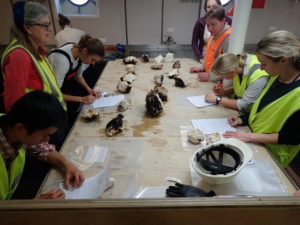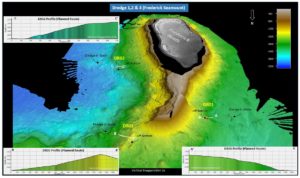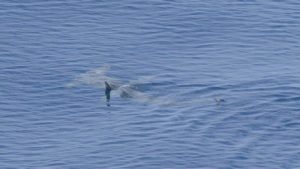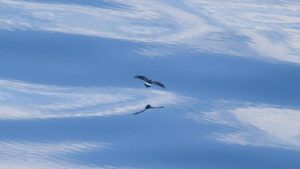Educator on Board – information for teachers

Find below some information to help you prepare for a live video link with Jamie Menzies, Educator on Board the RV Investigator.
1. Science topic
To help us prepare for your session, please email jamie.menzies@investigator.csiro.au with information about the topics you are working on in school. Learning about volcanoes? We can run a session with some rocks sampled from underwater volcanic seamounts. More interested in corals? We can show you some deep sea corals and other wildlife. The opportunities are endless and we’d be happy to discuss further!
If you like, you could also prepare some questions for me or the scientists. There are scientists from universities in both Scotland and Australia participating on this voyage.
The science objectives of this voyage are:
- Hotspot dynamics in the Coral Sea: connections between the Australian Plate and the deep Earth. Scientists will be collecting rocks from volcanoes along a submerged seamount chain and using sound, magnetics and gravity to make 3D maps of the volcano shapes (see image). These chains are similar to the Hawaiian and Canary islands in that they are volcanoes which form away from the edges of tectonic plates (such as in the Pacific “Ring of Fire”, and scientists want to understand how, why and when they formed.

Scientists describing rocks sampled from 2000m depth. Photograph/Jamie Menzies

A map showing the relief and sample sites on Frederick Seamount, one of the volcanoes being studied as part of this research. Photograph/Phil Vandenbossche (CSIRO), Rob Beaman (James Cook University).
- Understanding the spatial links between geomorphology and biodiversity in the Coral Sea Australian Marine Park. Maps of the underwater volcanoes will be analysed to understand how different shapes, structures and ‘landscapes’ provide habitats for marine species such as corals and invertebrates.
- Spatial and temporal variability in the distribution and abundance of seabirds. Scientists on the observation deck high on the ship will be observing seabirds and marine mammals (such as whales, dolphins and sharks) to understand where they live and their behaviours.


A hammerhead shark (top) and a black-bellied storm petrel (bottom) viewed from the RV Investigator. Photographs/Eric Woehler (BirdLife Australia)
2. Internet connection and hardware
Please ensure that you have a computer set up that has access to a reliable internet connection, as well as a microphone and a webcam. The sessions will take place using Skype. Please ensure that you have Skype installed on the computer and have a username set up. You will also need to add jamie.menzies@investigator.csiro.au to your contacts or email that address to provide your username.
As well as the Educator on Board, there might also be someone from CSIRO (the Australian science research agency who operate the ship) present to facilitate the call and answer questions.
3. Timings
The time zone of the voyage means the live crosses will take place at night, so it will be unlikely that anything can be seen from the bridge or the decks. However, we can show you some video footage of animal sightings and action from the bridge if there is availability.
4. Keeping up with the voyage
You can find the position of the ship on this interactive map.
There are also a few blogs which we will be using to communicate our experience and findings:
- University of Edinburgh ‘Mysteries of the Deep Earth‘ (this blog).
- CSIRO Educator on Board blog
If you are interested in learning about Australia’s wildlife, you can have a look at the Atlas of Living Australia and Bird Life Australia.
5. Sharing your experience
You can tweet about your experience using #RVInvestigator. You can also tweet me at @jamiemingis, if you like.
The scientists on board the RV Investigator can’t wait to share their experiences with your classroom! Please get in touch if you have any more questions about the session, and we look forward to speaking with you.
Main photograph: Sunset across the bow of the RV Investigator, Eric Woehler, Birdlife Australia.




Recent comments